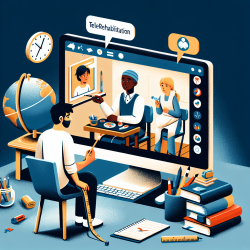Recent research has highlighted the efficacy and feasibility of telerehabilitation in a school-based setting for at-risk youth. The study, titled Exploration of the Effects of Telerehabilitation in a School-Based Setting for At-Risk Youth, offers valuable insights for practitioners aiming to enhance their therapeutic strategies.
Key Findings from the Study
The study involved two children who received 20 sessions of the Timocco motion-capture program, each lasting 30 minutes. The results showed improvements in fine and gross motor coordination, as measured by the Bruininks-Oseretsky Test of Motor Proficiency Short Form (BOT2-SF). Both children and research assistants reported positive experiences with the platform.
Quantitative Outcomes
- Both children showed overall improvements in motor skills.
- Child #1 improved in five out of eight sub-tests, though strength and balance did not improve.
- Child #2 improved in three out of eight areas, with minimal overall gains.
Qualitative Insights
The qualitative interviews revealed that children enjoyed the Timocco program but had specific preferences and dislikes. Research assistants noted the importance of customizing activities to maintain engagement and address individual needs.
Implementing Telerehabilitation: Best Practices
Based on the study's findings, here are some best practices for implementing telerehabilitation in a school-based setting:
- Customization: Tailor activities to meet each child's specific needs and preferences.
- Frequent Monitoring: Regularly review and adjust the program based on the child's performance.
- Engagement: Use a variety of games to maintain the child's interest and motivation.
- Collaborative Model: Involve teachers, aides, and therapists in the planning and execution of the program.
Encouraging Further Research
While the study offers promising results, it also highlights the need for further research to explore the long-term efficacy and broader applicability of telerehabilitation. Practitioners are encouraged to conduct additional studies and share their findings to contribute to the growing body of evidence supporting telerehabilitation.
To read the original research paper, please follow this link: Exploration of the Effects of Telerehabilitation in a School-Based Setting for At-Risk Youth.










